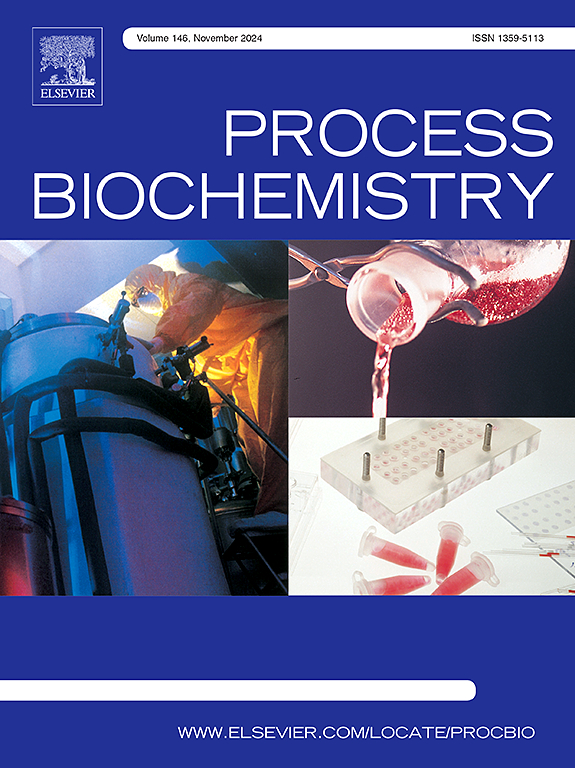A hybrid XGB-ANN model integrated with Lion Optimization Algorithm for improved prediction accuracy and lactic acid yield optimization
IF 4
3区 生物学
Q2 BIOCHEMISTRY & MOLECULAR BIOLOGY
引用次数: 0
Abstract
Machine learning (ML) has been widely applied in industrial fields in recent years. However, ML faces challenges in fermentation production due to complex features and limited data. To overcome the limitations of single models and improve the prediction accuracy and stability of lactic acid fermentation, we combined six classical ML models with Artificial Neural Networks (ANN) separately in a serial manner to construct the Classical-ANN (C-ANN) hybrid models. Meanwhile, implemented the Lion Optimization Algorithm (LOA) to systematically optimize critical fermentation parameters and conducted experimental validation. While single models showed moderate performance (Extreme Gradient Boosting (XGB) R²= 0.9197; ANN R²= 0.9295), C-ANN hybrids demonstrated superior accuracy across all metrics. The XGB-ANN model achieved exceptional performance (R²=0.9850), benefiting from XGB's robust feature selection and ANN's high-dimensional processing capabilities. SHAP analysis revealed fermentation time as the most critical yield determinant, followed by total volume and pH. Lion Optimization Algorithm parameters enabled a predicted yield of 81.21 %, with experimental validation showing only 4.72 % deviation from predictions. This study not only provides valuable assistance for optimization of fermentation production conditions in the short term but also offers an innovative and effective modeling approach for future research in this field.
结合Lion优化算法的混合XGB-ANN模型,提高了预测精度和乳酸产率优化
近年来,机器学习在工业领域得到了广泛的应用。然而,由于复杂的特性和有限的数据,ML在发酵生产中面临着挑战。为了克服单一模型的局限性,提高乳酸发酵的预测精度和稳定性,我们将6种经典ML模型分别与人工神经网络(ANN)串联,构建了经典-神经网络(classic -ANN, C-ANN)混合模型。同时,利用Lion Optimization Algorithm (LOA)对发酵关键参数进行系统优化,并进行实验验证。单一模型表现中等(Extreme Gradient Boosting (XGB) R²= 0.9197;ANN R²= 0.9295),C-ANN杂交在所有指标上都表现出更高的准确性。得益于XGB的鲁棒特征选择和人工神经网络的高维处理能力,XGB-ANN模型取得了优异的性能(R²=0.9850)。SHAP分析显示,发酵时间是最关键的产率决定因素,其次是总量和ph。Lion优化算法参数使预测产率达到81.21 %,实验验证与预测的偏差仅为4.72 %。该研究不仅为短期内发酵生产条件的优化提供了有价值的帮助,而且为该领域的未来研究提供了一种创新有效的建模方法。
本文章由计算机程序翻译,如有差异,请以英文原文为准。
求助全文
约1分钟内获得全文
求助全文
来源期刊

Process Biochemistry
生物-工程:化工
CiteScore
8.30
自引率
4.50%
发文量
374
审稿时长
53 days
期刊介绍:
Process Biochemistry is an application-orientated research journal devoted to reporting advances with originality and novelty, in the science and technology of the processes involving bioactive molecules and living organisms. These processes concern the production of useful metabolites or materials, or the removal of toxic compounds using tools and methods of current biology and engineering. Its main areas of interest include novel bioprocesses and enabling technologies (such as nanobiotechnology, tissue engineering, directed evolution, metabolic engineering, systems biology, and synthetic biology) applicable in food (nutraceutical), healthcare (medical, pharmaceutical, cosmetic), energy (biofuels), environmental, and biorefinery industries and their underlying biological and engineering principles.
 求助内容:
求助内容: 应助结果提醒方式:
应助结果提醒方式:


